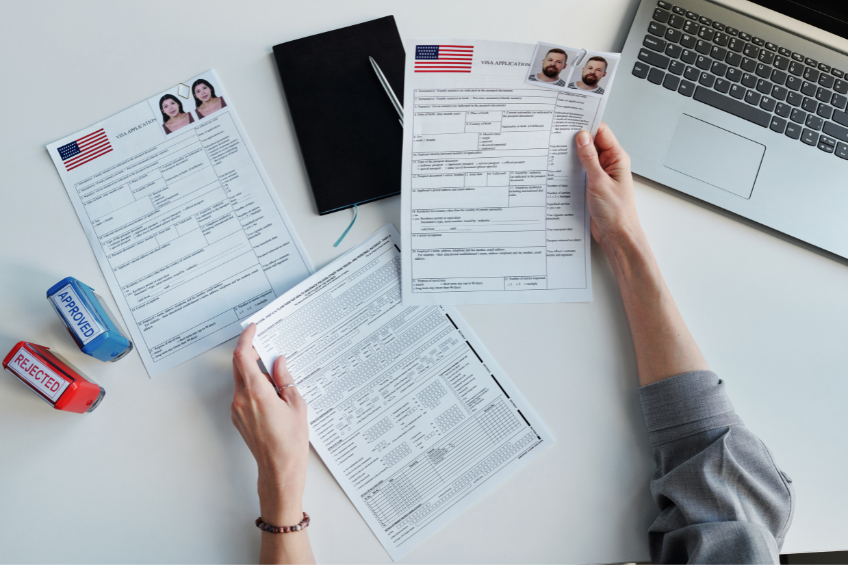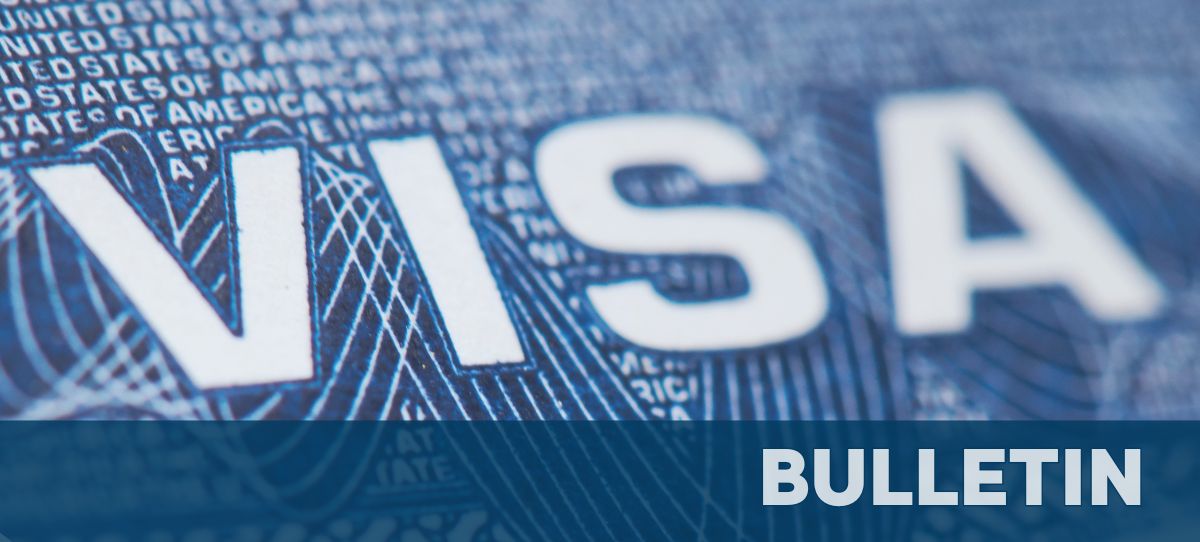If you are a Ukrainian national in the United States under Uniting for Ukraine (U4U) or with Temporary Protected Status (TPS), you are likely planning for a future beyond these temporary programs. For accomplished professionals, scientists, artists, and entrepreneurs, two long-term options that might be worth exploring are the EB-1A Extraordinary Ability and EB-2 National Interest Waiver (NIW) green cards.
Both of these “self-petition” green cards allow you to apply based on your own merits, without needing a U.S. employer to sponsor you. However, understanding if you qualify and how you can apply, requires a close look at both your professional achievements and your current immigration status. Let’s break down what you need to know.
Disclaimer: This article provides general information about U.S. immigration options. It is not a substitute for legal advice. Immigration law is complex and depends entirely on the specific facts of your case. Your immigration history, professional background, and even your travel patterns can change your eligibility and strategy. Always consult with a licensed immigration attorney to discuss your personal situation.
Immigration Status for Ukrainians – Why Your U.S. Entry is So Important
Before exploring the green card requirements, we must first understand your current immigration footing. Two factors are critical in determining your path to a green card: first, the way you entered the U.S., and second, the immigration status you currently hold. These factors typically shape where you might complete your green card process. The two main paths are:
- Adjustment of Status (AOS): Applying for your green card from inside the United States by filing Form I-485.
- National Visa Center (NVC) and Consular Processing (CP): Applying for your green card through a U.S. embassy or consulate outside the United States.
Eligibility for Adjustment of Status has a crucial first requirement: you must have entered the United States lawfully. This means you were inspected and either “admitted” (e.g., on a visa) or “paroled” (e.g., under the U4U program) by an immigration officer at an official port of entry. Only after meeting this “legal entry” requirement does your current status, such as one maintained through U4U or TPS, become the next important factor.
Why this distinction is critical for Ukrainians:
- U4U (Uniting for Ukraine): Entry under the U4U program is considered a “parole,” which satisfies the legal entry requirement for Adjustment of Status.
- TPS (Temporary Protected Status): TPS provides you with a lawful status to remain in the U.S., but it does not cure an unlawful entry. If you entered the U.S. without inspection and later received TPS, you generally do not meet the “legal entry” requirement for Adjustment of Status.
Uniting for Ukraine (U4U) and “Humanitarian Parole”
When you enter the U.S. through U4U, you are granted “humanitarian parole.” This allows you to live and work in the U.S. for a temporary period (typically two years, though re-parole may be an option).
However, for most immigration purposes, humanitarian parole is not considered a lawful “admission.” This is a critical legal distinction. This is because “admission” refers to a formal inspection and entry under a specific visa category, whereas “parole” is a discretionary act that allows someone to enter temporarily for urgent reasons without being formally admitted. If your only entry into the U.S. was through U4U parole, you may not be eligible to adjust your status to a green card from within the country.
Exception: If you had a prior lawful entry (e.g., you entered on a B-2 tourist visa or F-1 student visa and were lawfully admitted) before you received U4U parole, you may still be eligible to adjust status. This is a complex area that requires careful analysis by an immigration attorney.
Temporary Protected Status (TPS)
TPS provides you with “lawful status” and protects you from deportation, but it does not erase an unlawful entry. However, there is a key strategic advantage for TPS holders who wish to adjust their status.
If you have TPS and obtain Advance Parole (a travel permit), you can travel abroad and re-enter the U.S. Upon your return, you are inspected by an immigration officer. Critically, under a specific provision for TPS, this re-entry is considered a lawful “admission.” This lawful admission satisfies the “inspected and admitted or paroled” requirement for Adjustment of Status, creating a pathway to a green card from within the U.S. for individuals who might not have otherwise qualified due to an unlawful entry.
The Bottom Line: Your path (AOS vs. Consular Processing) depends heavily on your entry history. This is often the first and most important question an immigration attorney will ask.
The Goal – Qualifying for EB-1A or EB-2 NIW Green Cards
If you have a viable path to apply, the next step is to determine whether your professional profile meets the high standards for an employment-based green card in these categories.
EB-1A: Extraordinary Ability
The EB-1A is for individuals who have risen to the very top of their field. Think of it as the “gold medal” of green cards. You don’t need a job offer, but you must prove “sustained national or international acclaim.”
Qualification generally involves showing evidence of a major, internationally recognized award (like a Nobel Prize or an Oscar) or (and this is the path for most applicants) meeting at least three of the following ten criteria:
- Receipt of lesser nationally or internationally recognized prizes or awards for excellence.
- Membership in associations in the field which require outstanding achievements of their members.
- Published material about you in professional or major trade publications or other major media.
- Evidence that you have been asked to judge the work of others, either individually or on a panel.
- Evidence of your original scientific, scholarly, artistic, athletic, or business-related contributions of major significance to the field.
- Authorship of scholarly articles in professional or major trade publications or other major media.
- Evidence that your work has been displayed at artistic exhibitions or showcases.
- Evidence of your leading or critical role in distinguished organizations.
- Evidence that you command a high salary or other significantly high remuneration in relation to others in the field.
- Evidence of your commercial successes in the performing arts.
EB-2 National Interest Waiver (NIW)
The EB-2 NIW is for individuals with an advanced degree (Master’s, Ph.D., or a Bachelor’s plus five years of progressive experience) or who can demonstrate exceptional ability in their field. The “waiver” part means you are asking the U.S. government to waive the normal requirement of a job offer and labor certification because your work is in the “national interest.”
Securing the waiver involves satisfying a three-prong test established in the landmark case Matter of Dhanasar:
- Substantial Merit and National Importance: Your proposed work has significant value and is of consequence to the U.S. as a whole (e.g., in fields like healthcare, technology, science, entrepreneurship, or culture).
- Well-Positioned to Advance the Endeavor: You have the skills, experience, education, and a plan to move your proposed work forward.
- On Balance, It Is Beneficial to the U.S. to Waive the Job Offer: You must show that the U.S. would benefit enough from your contributions to justify forgoing the standard labor market test, which is designed to protect U.S. workers.
Key Difference: The EB-1A focuses on your past record of extraordinary achievement. The EB-2 NIW generally focuses on the future value of your proposed work to the United States.
The Green Card Process – Timelines, Fees, and Strategy
Once you have a clear picture of the requirements and have prepared your evidence, the next step is to understand the procedural journey ahead. The path to securing a green card isn’t a single application but a multi-stage process. Generally, it can be broken down into two key parts:
- Form I-140, Immigrant Petition: This is the core of your case, where you submit all the evidence to prove you qualify for EB-1A or EB-2 NIW.
- Green Card Application: This is either Form I-485 (Adjustment of Status) or Consular Processing.
Timelines and Premium Processing
a/ Standard I-140 Processing: Can take anywhere from 6 to over 18 months, depending on USCIS caseloads.
b/ Premium Processing: For an additional fee of $2,805 (as of August 2025), USCIS will make a decision on your I-140 petition within a set timeframe:
- 15 business days for EB-1A petitions.
- 45 business days for EB-2 NIW petitions.
Important: Premium Processing only speeds up the I-140 petition. It does not speed up the final green card application stage (I-485 or Consular Processing), which has its own separate timeline.
Additional Considerations & Potential Pitfalls
Getting a green card is about more than just having a strong application. You also need to watch out for a few important details along the way. We’ve highlighted the points below because this is where things can often go wrong, even for strong candidates. Keeping an eye on them is key to a smooth process:
- The Visa Bulletin: For a green card to be issued, a visa number must be available. The Department of State’s monthly Visa Bulletin tracks this. The availability can vary dramatically between categories.
For example, the EB-1 category is often “Current” for applicants from Ukraine, meaning there is no backlog and a visa is immediately available upon petition approval. In stark contrast, the EB-2 category is experiencing a significant, worldwide backlog. This means that even after your EB-2 petition is approved, you will face a substantial waiting period, potentially for several years, before you can file for your green card.
Because these backlogs can change, it is vital to monitor the official Visa Bulletin throughout your process.
- Maintaining Lawful Status: Your U4U parole and TPS have expiration dates. An approved I-140 petition does not, by itself, grant you the right to stay in the U.S. It is crucial to diligently maintain your underlying status or re-parole while your green card case is pending to avoid falling out of status, which could jeopardize your ability to adjust.
- Derivative Beneficiaries (Your Family): A huge advantage of these green cards is that your spouse and unmarried children under 21 can typically obtain green cards along with you as “derivative beneficiaries.” Their eligibility to adjust status or use consular processing will also depend on their own immigration history.
A Strong Petition is Better than a Fast Petition: While Premium Processing is a valuable tool, it is useless if your petition is weak. Rushing to file an incomplete or poorly documented case is a recipe for a denial. Focusing on building a robust, persuasive, and well-organized case file is often key to a successful outcome.
Conclusion and Your Next Steps
Navigating the path from temporary humanitarian status to becoming a U.S. permanent resident (green card holder) is a significant undertaking. The EB-1A and EB-2 NIW categories offer incredible opportunities for accomplished Ukrainians to build a permanent future in the U.S.
However, success depends on a clear-eyed assessment of your qualifications and a carefully planned legal strategy that accounts for the nuances of your immigration history. This article is designed to give you a foundational understanding so you can have a more productive conversation with an expert.
Your next step could be to schedule a consultation with a qualified immigration attorney who can review your full profile and provide guidance tailored specifically to you.
Need help with your case? Schedule a call with our customer care representatives and they will be happy to discuss your needs and schedule a call with our attorney.









